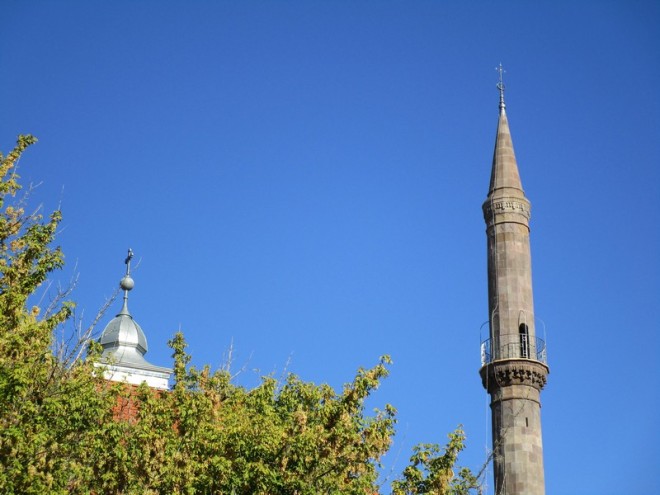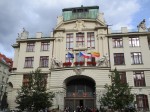Rovinj – (pronounced RO-veen) – or Rovigno in Italian – a Croatian city of about 14,000 located on the northern Adriatic coast.
Off Rovinj’s coast is a 19-island archipelago. Actually, our hotel was on one the islands – well, the hotel is the only thing on the island – but we had access to a ferry trip to/from the mainland. Directly behind the hotel was a smaller island for sunning and walking. A walkway connected the two. Yes, a difficult place to stay.
The Venetians settle Rovinj, which remained part of the Venetian Republic for 500 years. Although in Croatia, walking the town has a strong feel of being in Italy – that is given the narrow, winding pedestrian streets, hidden courtyards, and comfortable feel. Most of the streets lead to/from the church at the top. Some of the homes along the water define waterfront property.
With a seaside setting and with culinary Italian roots, how is this setting for lunch? Yes, I had pasta.

Both evenings here, Rovinj treated us to super-outstanding sunsets.
Our time in Rovinj was our vacation from vacation. Rovinj offers a beautiful setting and a chance to sit back and relax. To close this post about this seaside resort, here’s a 3-minute video from Rick Steves.
Next Stop: Ljubljana
Click here for past posts of this tour.





 A tour guide was with us the entire time (we had a wonderful Czech named Jana)
A tour guide was with us the entire time (we had a wonderful Czech named Jana)






